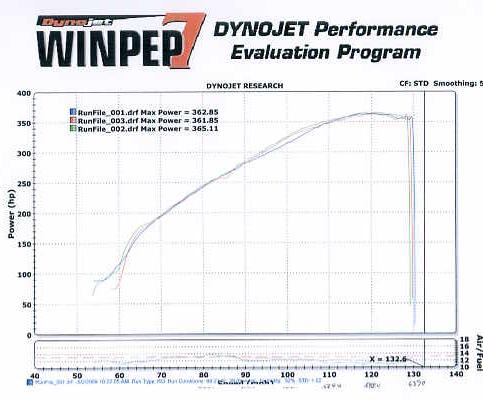302 HO block DSS prepared with main support and windage tray
331 cu. in. (3.25 stroke X 4.030 bore)
10 to 1 forged flat top pistons
165 AFR heads ( In. 1.90/ Ex. 1.60 valves; 61cc combustion chamber; 1.550" dual springs, titanium retainers)
1.6:1 ratio aluminum roller rockers
Comp Cam XE282HR (In. 232 duration @ 0.050/.565 lift; Ex. 240 duration @ 0.050/ .574 lift; lobe separation angle 112 degrees; hydraulic roller lifters)
Performer Air Gap dual plane intake manifold
715 Holly carb with vacuum secondary and QF metering blocks
Ford dual point dist. with Pertronics II module (16 deg. initial, 36 deg. total at 3000 rpm) and steel drive gear
8 quart Canton pan
2 quart Accusump (pre-start oiler)
High Volume
oil pump with ARP driveshaft
Oil cooler
Shelby Tri-Y headers
X-pipe crossover
2.5 in. exhaust and tailpipes
the AFR 165 heads were from my previous 289 engine with TRW popup forged pistons and 305 deg duration solid lifter cam; rods were bent when standard Felpro intake manifold gasket failed and filled #8 cylinder with water while running; now using steel core intake gasket to avoid repeat of intake gasket failure problem.
Current performance with small intake heads (165cc) shows that AFR heads really flow well; if expense were not an issue, I would prefer to have AFR 185 or AFR 205 heads with this 331 engine. A good example of what larger intake heads would produce is shown in the post by tbirdz12 who had AFR 205's on his engine.
As a comparison, an earlier setup using a SMS-2 Shelby hi-rise dual plane manifold and a Ford Racing 397-M-6250-X-303 cam (224 duration @ 0.050/ .542" lift) produced 325 RWHP. It just goes to show how the right combination of components can produce a nice normally aspirated engine.
